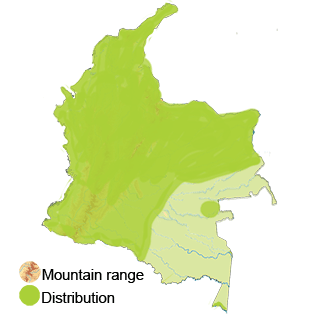Rock Dove
The Rock Dove (Columba livia). Read in Spanish
Appearance: Rock Doves have a relatively small body with a length of about 30-35 cm. Their plumage is typically bluish-gray, with two dark wing bars, and iridescent feathers on the neck. They have red feet, yellowish eyes, and a distinctive cooing call. Males and females look similar, with minor differences in size and color intensity.
Habitat: Rock Doves are extremely adaptable birds and can be found in a variety of habitats, including urban areas, farmlands, cliffs, and rocky outcrops. They are commonly seen in cities, towns, parks, and agricultural areas. They are known for their ability to thrive in urban environments and are often found near human settlements.
Behavior: Rock Doves are social birds that form large flocks. They are known for their swift and agile flight characterized by distinctive wing clapping. Rock Doves are opportunistic feeders, consuming seeds, grains, fruits, and occasionally insects. They are known to be monogamous and form strong pair bonds.
Breeding: Rock Doves breed year-round, with nests being simple structures made of sticks, twigs, and other materials. They typically lay two white eggs, and both parents share the responsibility of incubating the eggs and raising the young. The young pigeons (squabs) are fed crop milk by their parents until they are weaned.
Conservation Status: Rock Doves are not considered a threatened species in Colombia. Their adaptability to urban environments and ability to utilize human-provided resources have contributed to their widespread distribution.
Distribution
The Rock Dove (Columba livia), also known as the common pigeon or city pigeon, is a ubiquitous species found worldwide, including in Colombia. In Colombia, Rock Doves can be observed in various regions throughout the country.
Urban Areas: Rock Doves are commonly found in urban and suburban environments across the country. They are frequently seen in cities, towns, parks, plazas, and other human-modified landscapes where they can scavenge for food and find suitable roosting sites. Major cities such as Bogotá, Medellin, Cali, and Barranquilla are known to have significant populations of Rock Doves.
Coastal Regions: Along the coastal areas of Colombia, including cities like Cartagena, Santa Marta, and Buenaventura, Rock Doves can often be observed near ports, beaches, and harbors. These pigeons may congregate near coastal cliffs, buildings, or rocky outcrops for nesting and roosting.
Rural Areas and Agricultural Lands: Rock Doves are adaptable birds and can also be found in rural areas, farmlands, and agricultural regions. They may inhabit barns, silos, or other structures on farms, as well as open fields, where they feed on seeds, grains, and other food sources.
Mountainous Regions: In mountainous regions and highland areas of Colombia, such as the Andes Mountains, Rock Doves can be observed at varying elevations. They may nest on cliffs, rock ledges, or man-made structures like bridges or buildings in these rugged terrains.
Forested Areas: While Rock Doves are more commonly associated with urban environments, they can also be found in forested areas throughout Colombia. In forested regions like the Amazon Rainforest or the Chocó biogeographic region, Rock Doves may occur near forest edges or clearings.
Taxonomy
The Rock Dove (Columba livia)
- Kingdom: Animalia
- Phylum: Chordata
- Class: Aves (Birds)
- Order: Columbiformes
- Family: Columbidae
- Genus: Columba
- Species: Columba Livia
Vocalization
The Rock Dove (Columba livia)
- Cooing:The most recognizable sound produced by Rock Doves is their soft, repetitive "coo-coo" call. This gentle cooing sound is often used by males to attract females and establish territories. The cooing call can vary in pitch and duration, with individual doves having distinct cooing patterns.
- Purring: Rock Doves also produce a soft, rolling "purr" sound, which is often emitted during courtship displays or interactions between mates. The purring vocalization is soothing and can communicate a sense of calmness and contentment.
- Bill Clapping: Another vocalization that Rock Doves engage in is bill clapping, where they rapidly clap their beaks together to produce a sharp, snapping sound. Bill clapping is often performed during courtship rituals and can serve as a display of strength and vitality.
- Wing Whistling: When in flight, Rock Doves may produce a distinctive sound known as wing whistling. This noise is caused by the air passing through the wing feathers during flapping, creating a gentle whistling or humming sound. Wing whistling can be heard as Rock Doves take off or maneuver in the air.
- Alarm Calls: Rock Doves have alarm calls that they use to alert members of their flock to potential threats or dangers. These alarm calls are typically sharp, rapid coos or clucks that signal danger and prompt other doves to be vigilant or take evasive action.
- Aggressive Calls: During territorial disputes or aggressive encounters, Rock Doves may vocalize with harsh, guttural coos or growls. These aggressive calls are meant to intimidate rivals and assert dominance over territory or resources.





